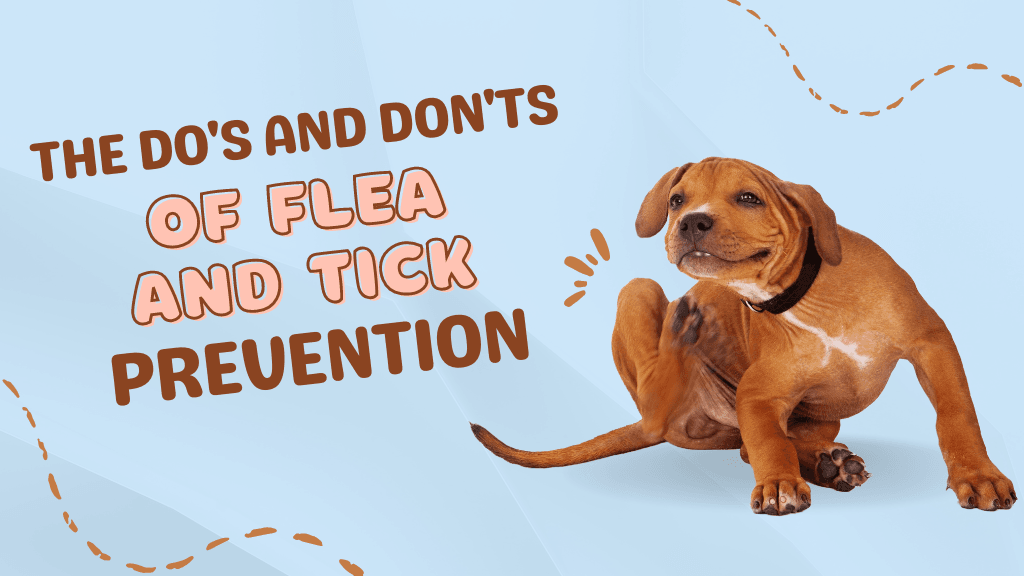Flea and Tick Control: Do's and Don'ts for Protecting Your Pets
)
Are you keeping up with your pet’s flea and tick prevention, or do you sometimes find yourself forgetting a dose? Maintaining a consistent parasite prevention routine is vital, and missing just a few doses can leave your pet vulnerable.
We understand that life can get busy, but we want to remind you of the importance of regular parasite control. Fleas and ticks can pose serious health risks, but with the right knowledge and products, you can keep your pets safe from these pests.
Why Protecting Pets from Fleas is Crucial
While fleas tend to be more active during the warmer months, they can reproduce indoors throughout the year if your home remains warm, creating a continuous risk.
Most pets will experience some irritation from flea bites, but for those with flea allergies, the reaction can be severe. Pets with an allergy to flea saliva often develop extreme itching, swelling, and inflammation. Left unchecked, this can lead to excessive scratching, which can cause wounds and secondary infections that need to be treated by a vet.
On top of skin problems, fleas are also carriers of various diseases, including tapeworms and bacterial infections. Protecting your pet from fleas is about more than comfort - it’s about preventing serious health problems.
The Dangers Ticks Pose to Pets
Traditionally, tick season ran from early spring to summer, but in parts of Queensland, ticks are now causing problems year-round. Paralysis ticks are particularly dangerous as they inject a toxin into their host, which can affect pets’ muscles and breathing.
Pets affected by tick paralysis may show signs such as muscle weakness, vomiting, and difficulty breathing. If left untreated, paralysis ticks can be fatal, making prompt treatment crucial.
Additionally, brown dog ticks infected with Ehrlichia canis have been found in several regions across Australia. These ticks transmit a potentially fatal disease to dogs, causing fever, bleeding issues, and weakness.
Flea and Tick Prevention: The Key Dos and Don’ts
To ensure your pets are protected from fleas and ticks, follow these simple guidelines:
Do:
- Make sure you are using the correct flea and tick treatment for your pet’s weight. If your pet has gained weight, check with our vets about switching to a higher dosage.
- Always read the instructions on flea and tick treatments to ensure proper application and avoid any complications, such as the timing of baths.
- If your pet has specific health concerns, such as a sensitive stomach or a history of seizures, speak to our team about which flea and tick prevention options are safest.
- Ask our vets about combinations of treatments to protect against other parasites, like heartworm or intestinal worms, alongside fleas and ticks.
- Regularly inspect your pet for ticks if you live in or visit areas where ticks are common.
Don’t:
- Forget to keep up with your pet’s flea and tick treatments. A good way to remember is to set a monthly reminder on your phone or calendar.
- Use dog flea treatments on cats, as these can be harmful or even toxic to them.
- Stop administering flea and tick treatments in winter. Parasites can still thrive in warm homes or mild climates.
If you have any concerns about flea and tick prevention, or if you need help choosing the best product for your pet, don’t hesitate to contact our team!
| Tags:Proactive Pet CareClient Information |

